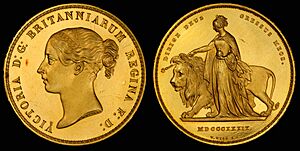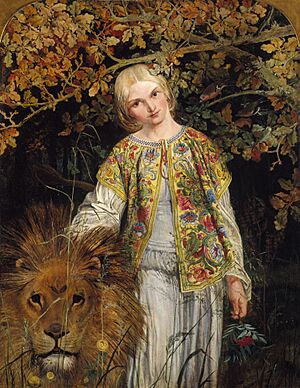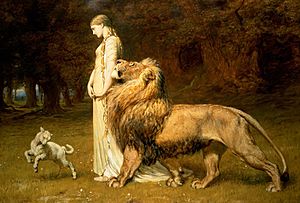Una and the Lion facts for kids
The Una and the Lion is a very special British gold coin. It was worth £5 and showed Queen Victoria. Many people think it is one of the most beautiful British coins ever made.
A talented artist named William Wyon designed this coin in 1839. He made it to celebrate Queen Victoria becoming queen in 1837. The coins were first made in 1839. They were probably meant for coin collectors, not for everyday shopping. Only a few hundred of these coins were made. They also came in different versions, like using different metals or having small changes to the queen's hair.
This coin is also the lightest of the British £5 coins. It weighs about 38.7 to 39.3 grams.
The Front of the Coin (Obverse)
The front of the coin shows a picture of Queen Victoria's head. Around her head, you can read a Latin phrase. It says "VICTORIA D G BRITANNIARUM REGINA F D". This means "Victoria by the Grace of God, Queen of the British Territories, Defender of the Faith".
The Back of the Coin (Reverse)
The back of the coin shows Queen Victoria walking next to a lion. She is walking to the left. Another Latin phrase is written here: "DIRIGE DEUS GRESSUS MEOS". This means "May God direct my steps".
You can also see the Roman numerals "MDCCCXXXIX" under the lion. These numbers stand for the year 1839.
Who Was Una?
The design on the back of the coin shows the young Queen Victoria as Lady Una. Una is a character from a very old poem called The Faerie Queene. This poem was written by Edmund Spenser in 1590.
It was a very brave choice to show a British queen as a fictional character on a coin. This was the first time it had ever happened! On the coin, Queen Victoria, as Una, holds a special stick called a sceptre. The lion is Una's protector, and it represents England.




